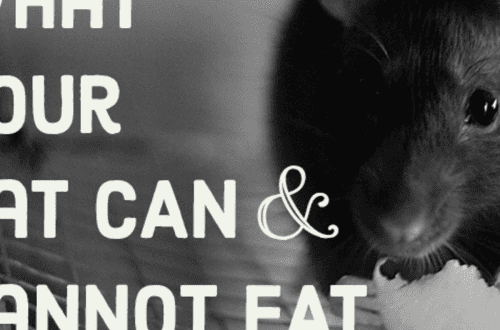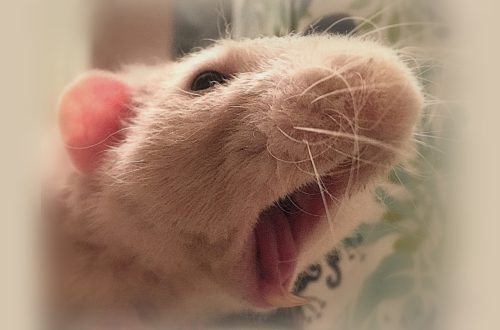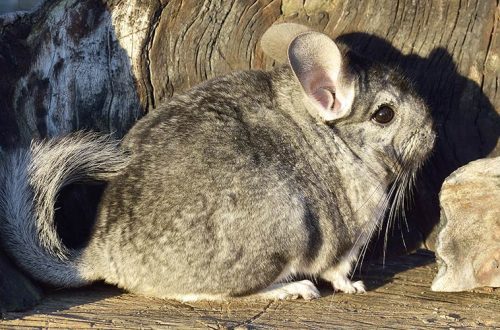
د منځپانګې عام غلطی
There is such an anecdote:
Question: What do a guinea pig and a female programmer have in common?
Answer: The guinea pig also has nothing to do with the sea or pigs.
Or another, also almost a “joke”:
The place of action is a veterinary hospital. The veterinarian answers the phone call, and between him and the caller, by the way, an adult and, judging by his voice, a completely normal person, the following dialogue takes place:
– Tell me, please, how much do guinea pigs sleep?
“You know, I can’t say for sure, I’m not an expert on guinea pigs, but maybe you have it sick?”
– No, we bought her two days ago and she was very active, so cheerful. And now he doesn’t eat, he doesn’t drink, he just sleeps, for a long time already …
– It is possible that you were sold a not quite healthy pig, please tell us in detail where and how you bought it.
– Well, we went to the bird market, bought a pig, bought an aquarium, poured water …
(A curtain)
The name “guinea pigs”, being a misconception itself, has given rise to many major misconceptions and content errors associated with these animals.
First, let’s find out why guinea pigs are called that. The guinea pig was brought to Russia from across the sea, which is why it was originally called “overseas”. Subsequently, the word “overseas” was transformed into “marine”.
The guinea pig has nothing to do with pigs either. Opinions differ as to why the animals received such a name. Some sources claim that the pigs were so named because of the structure of the head of the animals. Others explain this by saying that the sounds made by pigs are similar to the grunting and squealing of pigs. Be that as it may, thanks to their name, as well as various sources of information, pigs have turned out to be one of those animals regarding which there are the most misconceptions.
Here, for example, due to the fact that the guinea pig, there is an erroneous opinion that it should be kept … in an aquarium. filled with water. Like the joke above. Quite recently, members of our Club, having arrived at the shooting of a talk show, were once again dumbfounded by the question about the pigs of one participant in the filming: “And where do they live with you? In the vodka? I want to tell everyone: pigs do not live in water! They are land mammals and have a very strained relationship with water. It is also wrong to keep pigs without water, but all in the same aquarium. The explanation is simple: these animals need a well-ventilated – but without drafts – room, which the aquarium, due to its other purpose, cannot provide. Therefore, it is optimal to keep pigs in lattice cages or special racks for guinea pigs.
Often, out of ignorance, people take out a cage with a pig in the open sun or leave it in a draft. It is not right! Both have a detrimental effect on the health of the animal, leading in the first case to heat stroke (mostly lethal), and in the second to runny noses and pneumonia (which is difficult to treat and is also often fatal). The guinea pig should be kept in a warm, but not hot, draft-free room. If the cage is taken out into the sun, then inside it there should always be a house where the pig could hide from direct rays.
Apparently, the name “mumps” has also given rise to a misconception about what these animals eat. Among the uninitiated, it is believed that since the pigs themselves feed on garbage, then their “smaller namesakes” should be content with the same, i.e. leftover food from the table, waste and slop. Such food, unfortunately, will inevitably lead to the death of the animal, because. he needs a well-balanced, varied diet, to which the aforementioned ingredients have nothing to do.
For normal life and reproduction, a guinea pig needs good nutrition. The pig should receive a grain mixture, vegetables and hay. In addition, pigs belong to those few mammals that are unable to independently synthesize vitamin C (ascorbic acid) in their body. This means that they must fully satisfy their need for it through the food they take.
Very often one hears misconceptions about the smell of an animal in an apartment. I want to note that pigs smell much less than rats or hamsters. The answer lies in nature, where pigs are absolutely defenseless, and therefore the protection and survival of the species lies in rather intensive reproduction and in … rare cleanliness; the pig many times a day “washes”, combs and licks the fur for itself and its babies and tries to destroy everything that can give out its location to predators by smell. Thus, it is unlikely that a predator will be able to find a pig by smell, most often its fur coat emits only a slight smell of hay. Therefore, at home, the cage remains clean for a longer period: by intelligently planning your pet’s home, you can clean and clean it only once a week.
The misconception about odor leads to animals being mishandled with inappropriate bedding material. For example, even the breeders themselves are often mistaken when they say that the floor of the cage cannot be sprinkled with sawdust – only chips and shavings are suitable for this. I personally know several pig breeders who use some non-standard hygiene products when keeping their pigs – rags, newspapers, etc., but in most cases, if not everywhere, pig breeders use sawdust, not chips. And it is sawdust that prevents the appearance of odor in the cells for a longer time.
Our pet shops offer a wide range of products, from small packages of sawdust (which can last for two or three cleanings of the cage), to large ones. Sawdust also come in different sizes, large, medium and small. Here we are talking about preferences, who likes what more. You can also use special wood pellets. In any case, sawdust will not harm your guinea pig in any way. The only thing that should be given preference is sawdust of a larger size.
The widespread opinion that pigs are uninteresting animals and can do nothing except how to chew, in our opinion, does not hold water. Pigs are easy to learn and train, and even perform in Durov’s Animal Theatre! A pig can be taught to respond to a name, “serve”, ring a bell, play ball, look for objects, kiss … You can even teach pigs to guess the melody and distinguish colors! The key here is trust and patience. And if the size of the cage allows, you can set up a whole play area for pigs, where they can fully show their natural abilities.
In general, keeping guinea pigs is a very exciting activity, contrary to popular belief. You can’t just put a guinea pig in a crate and expect it to sit there stupidly for hours on end, chewing its food. The fact is that pigs are very sociable and responsive animals, able to express various emotions and convey their meaning to a person, which makes their content no less rich and interesting than, say, the content of dogs or cats. How do pigs interact? For example, hamsters have a fairly low degree of interaction with humans: they explore, run away, bite, receive a certain kind of affection, as well as food. Pigs, in addition to this, are able to demonstrate emotions, such as satisfaction, irritation, fun, fear, anger, etc. Pigs also have the potential to distinguish between 5-10 words. My guinea pigs respond to their own names, and also recognize the words “mumps”, “carrot”, “pepper”, as well as the concept of “stop the fight”, conveyed by me with the word “stop” or light tapping on the cage. They also react to footsteps, running water, and the rustling of bags and plastic bags. When I talk to them, they understand that I am talking to them and they answer me. Of course, I do not pretend that the pigs capture the meaning of words, and not the emotional-intonational content, but they love it when I talk to them.
Now you understand that pigs are completely undeservedly deprived of attention, which inevitably leads to little information enlightenment for those who want to get a guinea pig, and this, in turn, leads to the formation of almost myths about the maintenance of these animals. As a result, errors often occur. But we hope that this article will help you avoid common mistakes and you will never let a guinea pig swim in an aquarium for two days, having previously fed it with waste from the table – after all, the pig really has nothing to do with the sea or pigs.
© Elena Uvarova, Alexandra Belousova
There is such an anecdote:
Question: What do a guinea pig and a female programmer have in common?
Answer: The guinea pig also has nothing to do with the sea or pigs.
Or another, also almost a “joke”:
The place of action is a veterinary hospital. The veterinarian answers the phone call, and between him and the caller, by the way, an adult and, judging by his voice, a completely normal person, the following dialogue takes place:
– Tell me, please, how much do guinea pigs sleep?
“You know, I can’t say for sure, I’m not an expert on guinea pigs, but maybe you have it sick?”
– No, we bought her two days ago and she was very active, so cheerful. And now he doesn’t eat, he doesn’t drink, he just sleeps, for a long time already …
– It is possible that you were sold a not quite healthy pig, please tell us in detail where and how you bought it.
– Well, we went to the bird market, bought a pig, bought an aquarium, poured water …
(A curtain)
The name “guinea pigs”, being a misconception itself, has given rise to many major misconceptions and content errors associated with these animals.
First, let’s find out why guinea pigs are called that. The guinea pig was brought to Russia from across the sea, which is why it was originally called “overseas”. Subsequently, the word “overseas” was transformed into “marine”.
The guinea pig has nothing to do with pigs either. Opinions differ as to why the animals received such a name. Some sources claim that the pigs were so named because of the structure of the head of the animals. Others explain this by saying that the sounds made by pigs are similar to the grunting and squealing of pigs. Be that as it may, thanks to their name, as well as various sources of information, pigs have turned out to be one of those animals regarding which there are the most misconceptions.
Here, for example, due to the fact that the guinea pig, there is an erroneous opinion that it should be kept … in an aquarium. filled with water. Like the joke above. Quite recently, members of our Club, having arrived at the shooting of a talk show, were once again dumbfounded by the question about the pigs of one participant in the filming: “And where do they live with you? In the vodka? I want to tell everyone: pigs do not live in water! They are land mammals and have a very strained relationship with water. It is also wrong to keep pigs without water, but all in the same aquarium. The explanation is simple: these animals need a well-ventilated – but without drafts – room, which the aquarium, due to its other purpose, cannot provide. Therefore, it is optimal to keep pigs in lattice cages or special racks for guinea pigs.
Often, out of ignorance, people take out a cage with a pig in the open sun or leave it in a draft. It is not right! Both have a detrimental effect on the health of the animal, leading in the first case to heat stroke (mostly lethal), and in the second to runny noses and pneumonia (which is difficult to treat and is also often fatal). The guinea pig should be kept in a warm, but not hot, draft-free room. If the cage is taken out into the sun, then inside it there should always be a house where the pig could hide from direct rays.
Apparently, the name “mumps” has also given rise to a misconception about what these animals eat. Among the uninitiated, it is believed that since the pigs themselves feed on garbage, then their “smaller namesakes” should be content with the same, i.e. leftover food from the table, waste and slop. Such food, unfortunately, will inevitably lead to the death of the animal, because. he needs a well-balanced, varied diet, to which the aforementioned ingredients have nothing to do.
For normal life and reproduction, a guinea pig needs good nutrition. The pig should receive a grain mixture, vegetables and hay. In addition, pigs belong to those few mammals that are unable to independently synthesize vitamin C (ascorbic acid) in their body. This means that they must fully satisfy their need for it through the food they take.
Very often one hears misconceptions about the smell of an animal in an apartment. I want to note that pigs smell much less than rats or hamsters. The answer lies in nature, where pigs are absolutely defenseless, and therefore the protection and survival of the species lies in rather intensive reproduction and in … rare cleanliness; the pig many times a day “washes”, combs and licks the fur for itself and its babies and tries to destroy everything that can give out its location to predators by smell. Thus, it is unlikely that a predator will be able to find a pig by smell, most often its fur coat emits only a slight smell of hay. Therefore, at home, the cage remains clean for a longer period: by intelligently planning your pet’s home, you can clean and clean it only once a week.
The misconception about odor leads to animals being mishandled with inappropriate bedding material. For example, even the breeders themselves are often mistaken when they say that the floor of the cage cannot be sprinkled with sawdust – only chips and shavings are suitable for this. I personally know several pig breeders who use some non-standard hygiene products when keeping their pigs – rags, newspapers, etc., but in most cases, if not everywhere, pig breeders use sawdust, not chips. And it is sawdust that prevents the appearance of odor in the cells for a longer time.
Our pet shops offer a wide range of products, from small packages of sawdust (which can last for two or three cleanings of the cage), to large ones. Sawdust also come in different sizes, large, medium and small. Here we are talking about preferences, who likes what more. You can also use special wood pellets. In any case, sawdust will not harm your guinea pig in any way. The only thing that should be given preference is sawdust of a larger size.
The widespread opinion that pigs are uninteresting animals and can do nothing except how to chew, in our opinion, does not hold water. Pigs are easy to learn and train, and even perform in Durov’s Animal Theatre! A pig can be taught to respond to a name, “serve”, ring a bell, play ball, look for objects, kiss … You can even teach pigs to guess the melody and distinguish colors! The key here is trust and patience. And if the size of the cage allows, you can set up a whole play area for pigs, where they can fully show their natural abilities.
In general, keeping guinea pigs is a very exciting activity, contrary to popular belief. You can’t just put a guinea pig in a crate and expect it to sit there stupidly for hours on end, chewing its food. The fact is that pigs are very sociable and responsive animals, able to express various emotions and convey their meaning to a person, which makes their content no less rich and interesting than, say, the content of dogs or cats. How do pigs interact? For example, hamsters have a fairly low degree of interaction with humans: they explore, run away, bite, receive a certain kind of affection, as well as food. Pigs, in addition to this, are able to demonstrate emotions, such as satisfaction, irritation, fun, fear, anger, etc. Pigs also have the potential to distinguish between 5-10 words. My guinea pigs respond to their own names, and also recognize the words “mumps”, “carrot”, “pepper”, as well as the concept of “stop the fight”, conveyed by me with the word “stop” or light tapping on the cage. They also react to footsteps, running water, and the rustling of bags and plastic bags. When I talk to them, they understand that I am talking to them and they answer me. Of course, I do not pretend that the pigs capture the meaning of words, and not the emotional-intonational content, but they love it when I talk to them.
Now you understand that pigs are completely undeservedly deprived of attention, which inevitably leads to little information enlightenment for those who want to get a guinea pig, and this, in turn, leads to the formation of almost myths about the maintenance of these animals. As a result, errors often occur. But we hope that this article will help you avoid common mistakes and you will never let a guinea pig swim in an aquarium for two days, having previously fed it with waste from the table – after all, the pig really has nothing to do with the sea or pigs.
© Elena Uvarova, Alexandra Belousova





